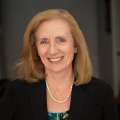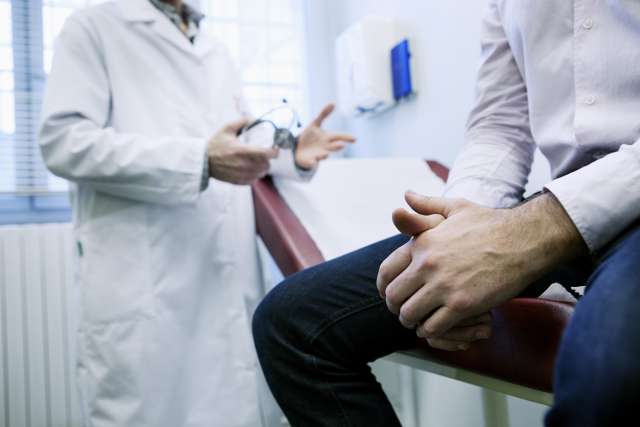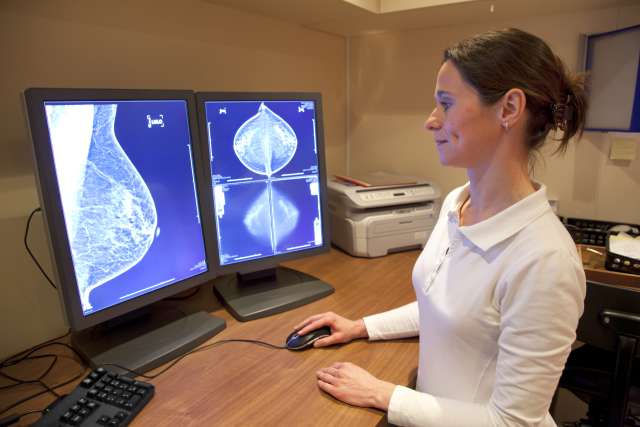Breast cancer is one of the most common cancers among women — second only to skin cancer — and early detection is critical to improve survival rates. The U.S. Preventive Services Task Force (USPSTF), an independent panel of national experts in prevention and evidence-based medicine, has updated its breast cancer screening guidelines to recommend biannual mammograms for all women beginning at age 40.
“We’re recommending that all women of average risk start screening at age 40, and that they get screened every other year until age 74,” said Dr. Carol Mangione, chief of the UCLA Health Division of General Internal Medicine and Health Services Research, co-author of the USPSTF guidelines and former chair of the panel. “By doing so, we can save 20% more lives of women with breast cancer.”
The latest recommendation marks a slight change from the USPSTF’s 2016 stance — the last time the recommendations were revised — which advised women at average risk to start biannual screenings at age 50, while considering screenings beginning at 40 based on individual risk factors.
The new recommendation is grounded in a worrying trend: a steady annual increase of nearly 2% per year in breast cancer incidence since 2015 among women in their 40s. The reasons for this rise are not fully understood, Dr. Mangione said, prompting the USPSTF to call for rigorous research to elucidate this pattern.
Addressing health disparities
The new guidelines also aim to confront health disparities, particularly among Black women, who face a 40% higher mortality rate from breast cancer compared to white women.
“Ensuring that Black women, in particular, start screening at age 40 is a really important first step for starting to address that inequity,” said Dr. Mangione.
The challenge of dense breasts
Another focal point of the USPSTF’s update is women with dense breasts, who account for nearly half the female population in the U.S., and who are at an increased risk of breast cancer. Mammograms are less effective for these women, prompting the suggestion of more meticulous testing.
“Supplemental testing with ultrasound or an MRI may help us find more treatable cancers earlier in women with dense breasts,” said Dr. Mangione. Although definitive conclusions are pending ongoing research, the current recommendation encourages women with dense breasts to engage in discussions with their clinicians about additional testing options.
Balancing screening frequency
While recommending biannual screenings may raise concerns about missing malignancies at the earliest stages, the USPSTF’s guideline is designed to balance the benefits of early detection with the 50% higher risk of false-positives associated with annual screenings. Dr. Mangione advised that the biannual schedule is not set in stone, emphasizing the importance of personalized care. “While we call for more research on benefits of annual vs. biannual testing, all women should talk to their clinicians about their options for follow-up testing so that they can get the care that’s right for them,” she said.
Comparative perspectives
The USPSTF’s recommendations do not, however, definitively settle the issue of when to begin and how often to undergo regular screening mammography. Other organizations have set differing standards. The American Cancer Society (ACS), for example, recommends that women with an average risk of breast cancer should start annual screenings at age 45 and transition to biannual screenings at 55 or have the opportunity to continue annual screenings. ACS also recommends that women should have the option of beginning screening at age 40 and should continue screening as long as their health is good and their life expectancy is at least 10 years.
Another organization, the American College of Obstetrics and Gynecology, recommends offering screening to women at average risk starting at age 40, and if they have not started at age 40 to consult with their health care provider to begin screening mammography no later than age 50, with screening continuing every one-to-two years until age 75. Beyond age 75 years, the decision to discontinue screening should be based on a shared decision informed by the woman’s health status and longevity.
“Everybody seems to be in agreement that starting at age 40 is important,” said Dr. Mangione. “Then there is split about the annual/biannual question. While there is some variability, having a consensus that women need to begin screening in their 40s is a very good thing.”





